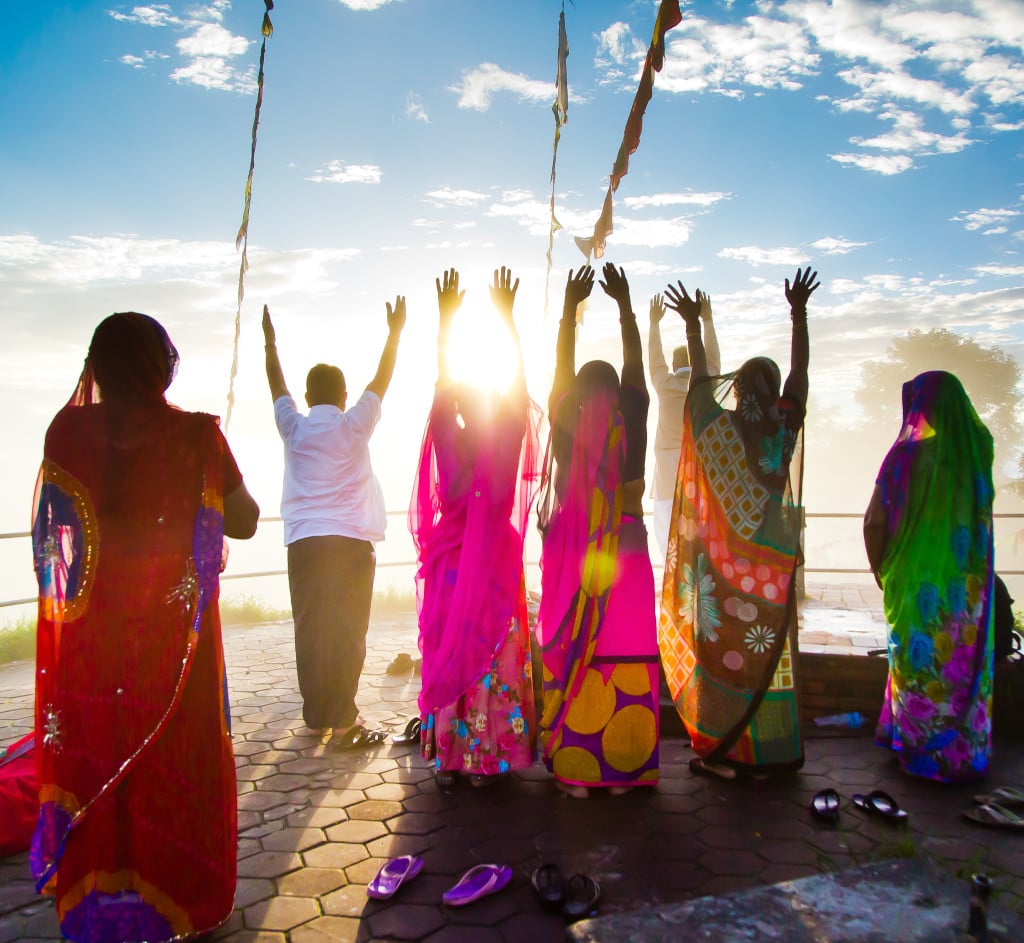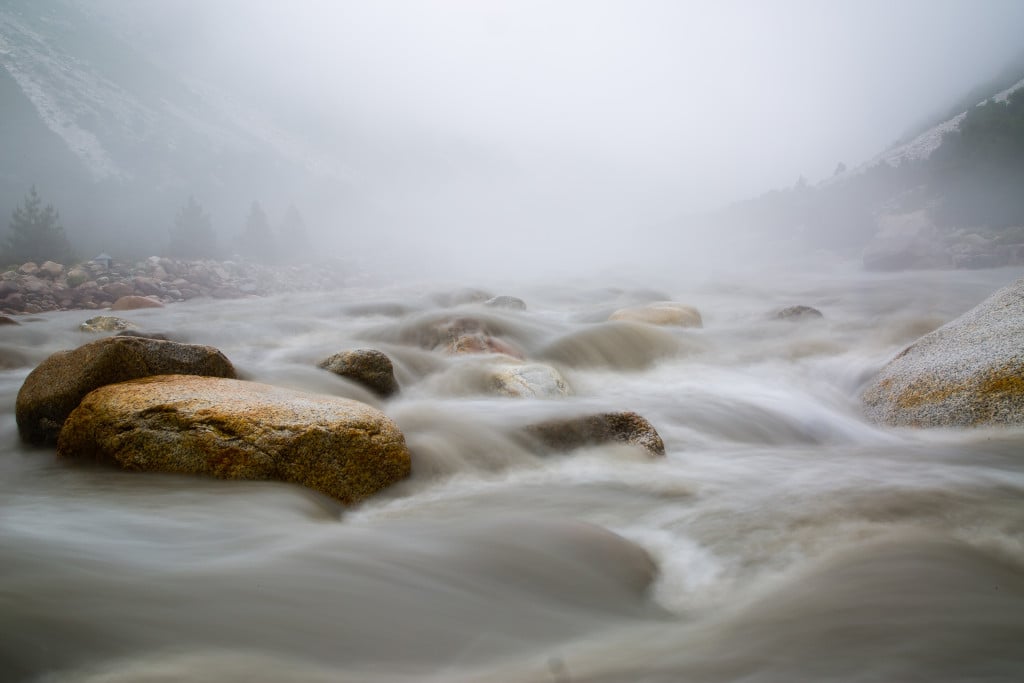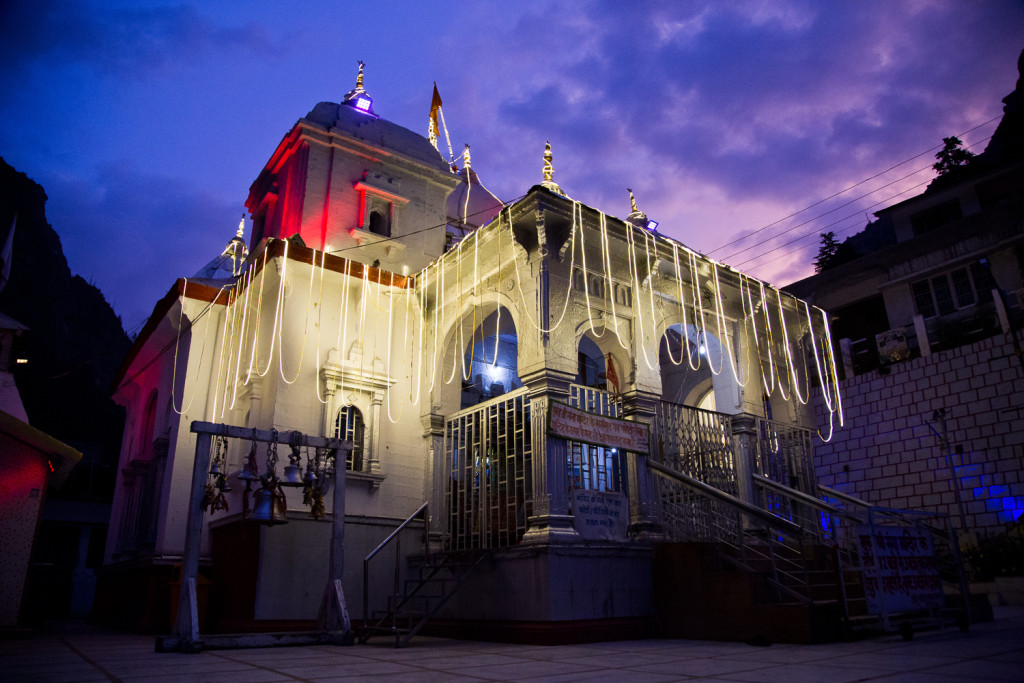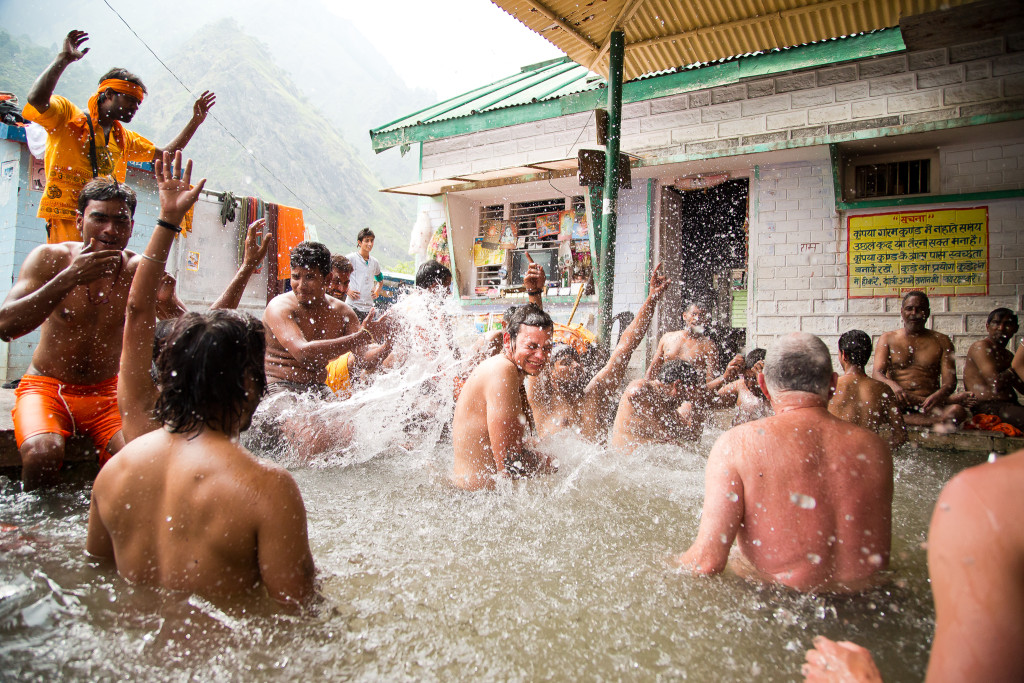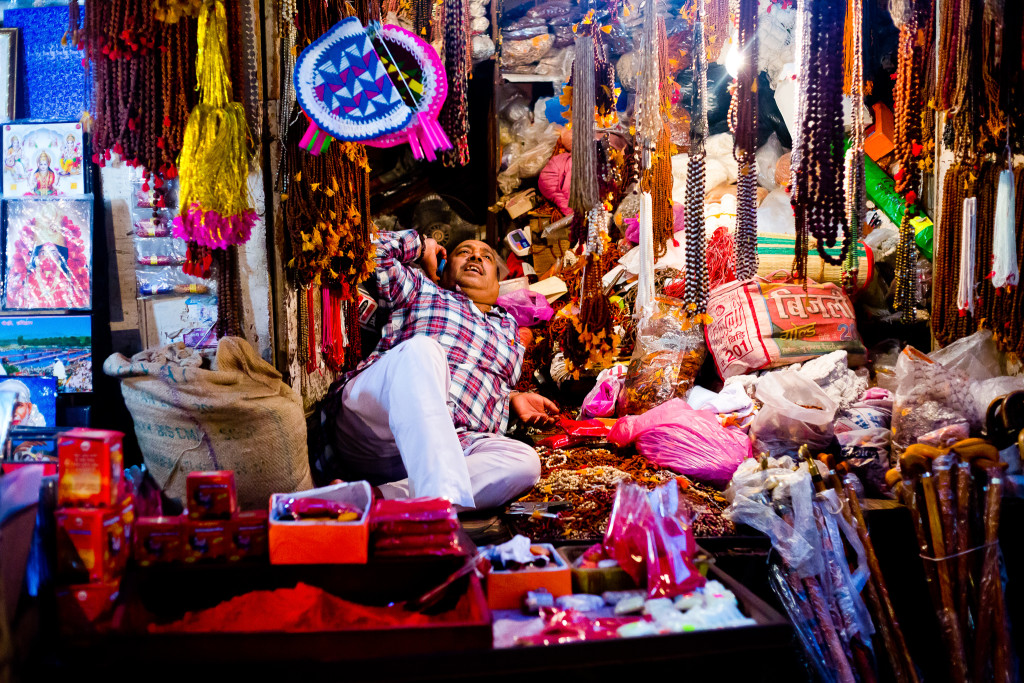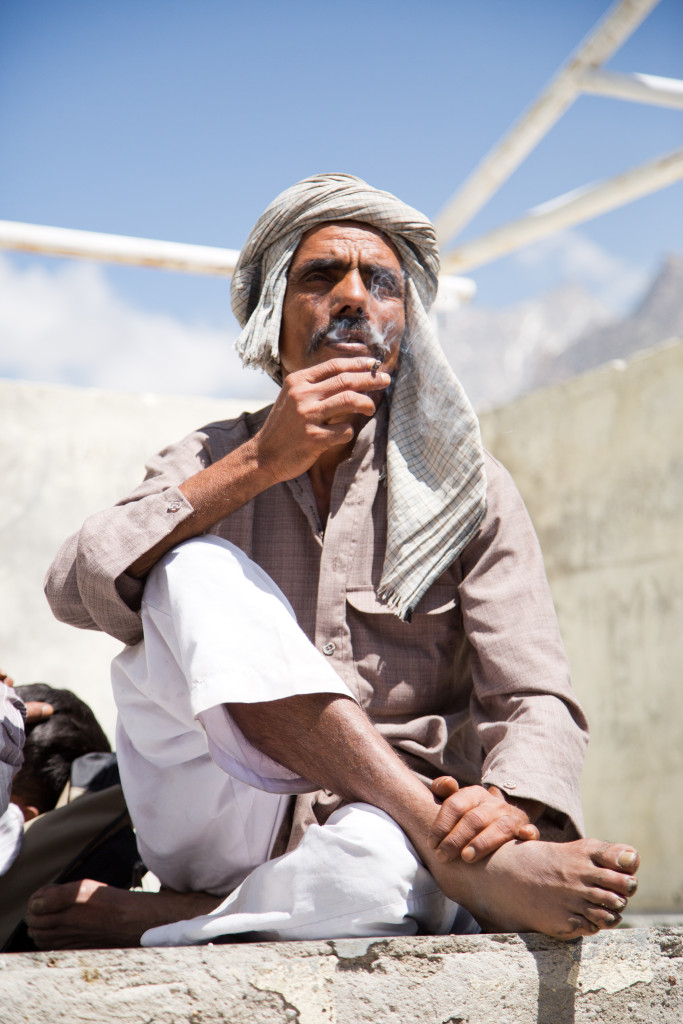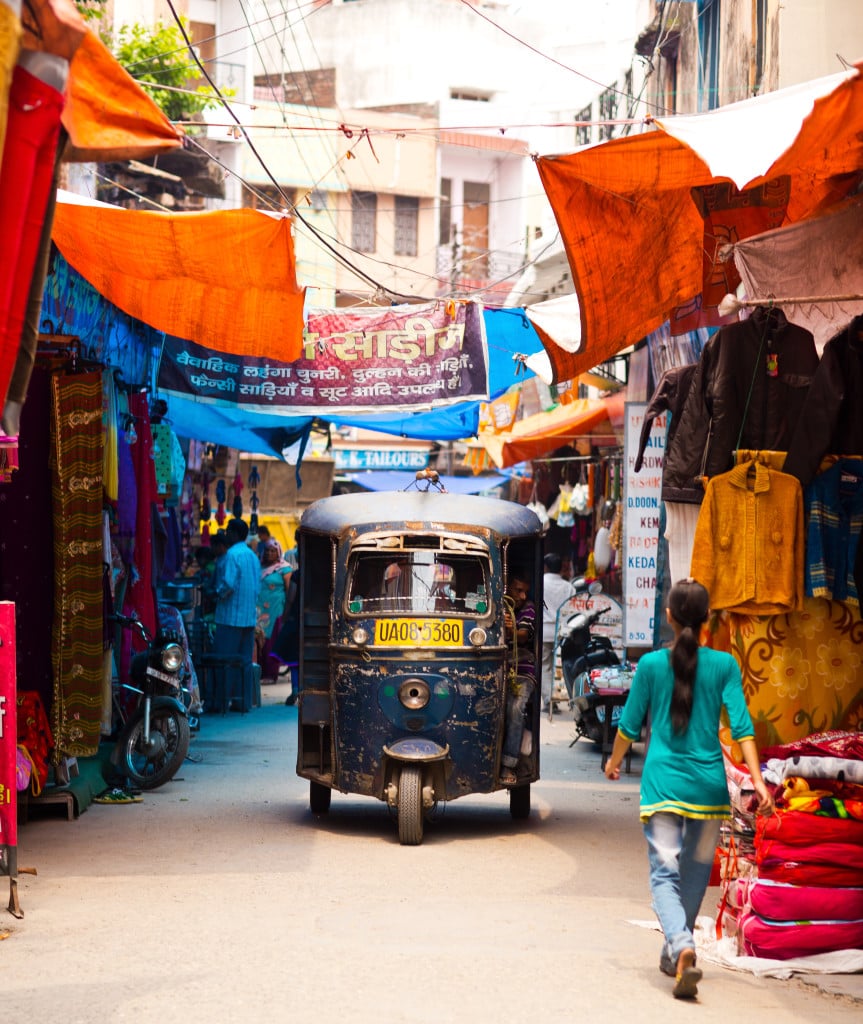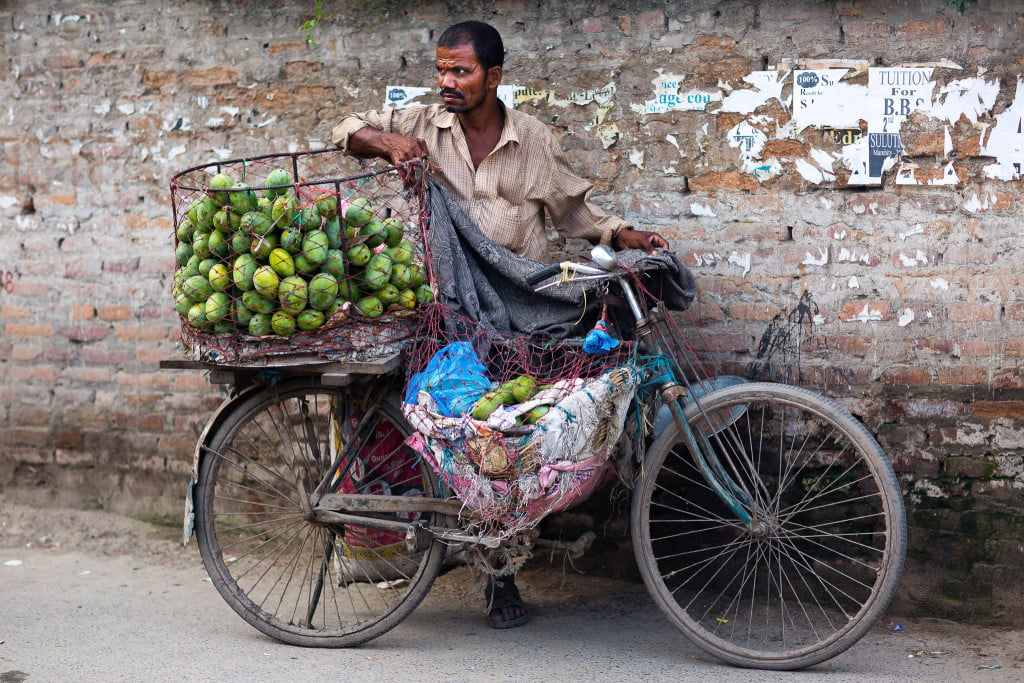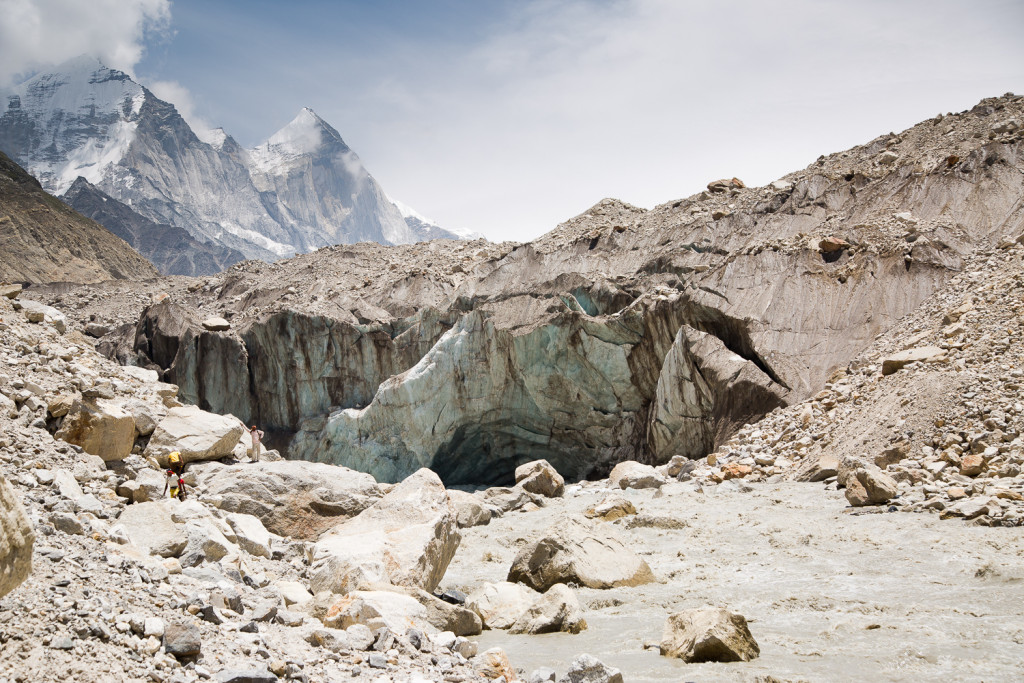Resource Travel – Productions Of The World – India Travel Guide
A Passage Through India With Ryan Carville
Words By Billy Murray
Photos By Ryan Carville
In Delhi, India the streets are packed. People lay on the ground, cars drive within inches of each other and the air emits a sweaty, pungent odor amidst the 103-degree weather. With a camera bag and luggage, photographer Ryan Carville moves through a crowd of locals. It’s his first time in the country, and he’s just one out of a group of 23 travelers set out to complete the Yatra Divine pilgrimage last summer.
Despite the “organized chaos” that’s continually present throughout the nation’s capital, the group boards a train to Hardwar—a city with an even larger population than Delhi. “If you follow the flow you’ll be okay. If you go against the flow they’ll be trouble,” Carville explains. After a four-hour trip, the group arrives at their hotel; a former palace located on the Ganges River. This is the furthest point of travel in India’s plains and the group’s final stop before the official pilgrimage begins.
Each summer, thousands of devout Hindus take part in a spiritual trek to Gomukh—known as “the source”—located at the edge of the Gangotri Glacier in the Himalayas. It’s an ancient practice and just one of the many steps towards enlightenment in the Hindu religion. “I would say I achieved an awakening,” says Carville. “I see things more for what they are now and my priorities are much more in order.” This is his guide for exploring, surviving and photographing the country.
Lay of the Land
There are plenty of popular landmarks in India such as the Taj Mahal or Golden Temple, although Carville was most intrigued by his own explorations. “Walking the streets you never know what you’re going to come across,” he says. “It could be a dilapidated shack right next to this gorgeous, tan-carved building—there’s so much beauty in this contrast.” His most memorable stops have been highlighted on this map.
The Ganges River
The Gagnes River known by many as “the life-blood of India,” rises in the Himalayas and empties into the Bay of Bengal in Bangladesh. Not only is it a major resource for millions on Indians, but it’s home to Punti Kash—a nightly mass that draws thousands of people.
Uttarkashi
Uttarkashi – During the pilgrimage, Carville spend a few nights at an ashram—a Hindu temple—in the village of Uttarkashi. With a population of only 10,000 people, the group participated in talks with the local monks. “It was one of the most spiritual places I’ve ever been to,” he says. “They don’t try to convert people and instead answer philosophical questions in ways a child could understand.”
Gamukh
Gamukh is the terminus of the Gangotri Glacier where pilgrims bathe in the icy glacier waters. But when Carville entered the pool, he dunked his head, shot up and screamed, “ICE!” He was hit in the head with a floating icicle and had a concussion. “You know, that’s very much like Mother Ganga. She probably needed a sacrifice from our group and you are the sacrifice,” said the pilgrimage leader.
Gangotri
Gangotri – This is the furthest point you can drive in the Himalayas and where, according to Carville, “the Ganga River really starts to come to life.” Just before the pilgrimage began, the group stopped here and was blessed for protection on their journey.
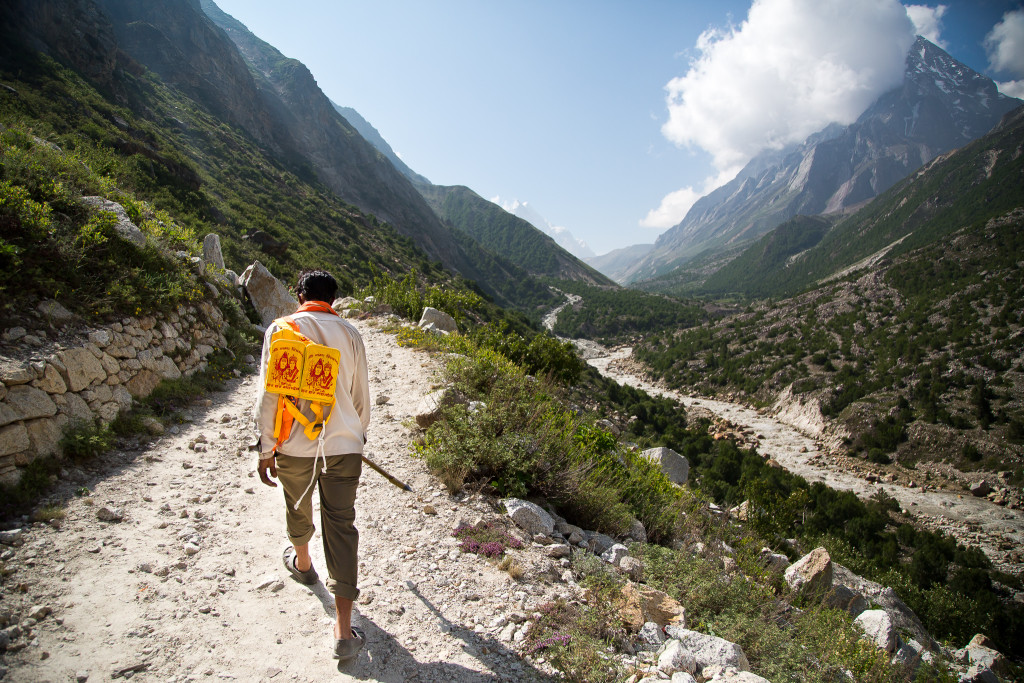
Travel
The most expensive part of your trip will be the airfare. Round-trip flights begin at about $900 in the winter and increase as the summer approaches. Once you’re there, however, the U.S. dollar goes very far and Carville recommends bringing $1000 for a two to three week stay to cover hotel, transportation, food and shopping.
In India, the national currency is rupees. The best way to exchange your money is to notify your bank that you’re traveling and use an ATM once you arrive. Just be careful not to withdraw more than you can spend, because you will not be able to trade it in for U.S. dollars once you get home.
Packing List
During your trip, it’s necessary to check out the both the country and city in order to get a full experience of India. With that said, your packing list will be a bit more unique than what you’ve brought on vacations in the past. This is Carville’s list of essential needs for an exploration on India.
-Clothing: light fleece, lightweight rain jacket, lightweight thermal underwear, flip-flops, sneakers, lightly colored cotton clothes, plenty of socks, long pants and no more than three to four outfits.
– Tea tree oil
– Probiotics
– Aspirin
– Sunscreen
– Toiletries
– Bug spray
– Imodium
– Aloe sunburn relief
– Bach rescue remedy
– Hand sanitizer
– Basic first-aid items
– Small flashlight
– Water bottle
– Clothesline
– Light yoga mat
– Umbrella
– Sun hat
Getting Around
When traveling between cities or long distance journeys, the train is the most ideal way to get around. While they’re much more crowded than trains in the U.S. (this even goes for New York subways), according to Carville, they’re both reliable and affordable. “Depending on where you’re going you can get a train ticket for between two and four dollars,” he says.
However, as dependable as buses are, the roads can be dangerous and accidents are always a risk. “We drove for 12 hours in a bus to Uttarkashi. You have to take back roads to get there. Just imagine 300-foot cliffs with no guardrails in an area that’s notorious for landslides,” says Carville. “You’re also being driven by a stranger and you have no idea know what his credentials are.”
For shorter distances within cities, Carville recommends taking a “took-took,” which is an Indian motorized rickshaw. They can carry up to three people and a few pieces of luggage and are available in every city and most of the small towns. Fortunately, if you have no idea where you’re going, most drivers speak decent English. Just make sure you have a map to be safe.
Food
Despite the hot weather, it’s necessary to avoid any cold food or drinks. The country’s water is filthy and filled with bacteria, according to Carville, so it can make you sick if your body isn’t used to it. And no ice! Period. This also goes for any fruit without a peel. The one exception is yogurt, which typically comes straight from a goat and has a sweet, tangy taste. “Most newer hotels have clean water and access to cleaner food so you can be a little more lenient,” says Carville. “But rule of thumb is if it’s questionable, it’s not worth it.”
Staple foods in India include rice and dal, which Carville describes as a “lentil-puree.” However, what’s interesting about dal—if you disregard its unappetizing description—is that no two dishes are alike. “A good dal is a thick chili-like texture, a bad dal is basically like broth and it’s traditionally served over rice,” he says. Also popular in India are pickled and spicy foods and, of course, curry dishes.
Of the nation’s delicacies, must-haves include dosas, which are similar to potato crepes that, “you can have for breakfast, lunch and dinner,” Carville explains. Other great dishes include paneer, a fresh un-aged cheese commonly made with lemon juice and vinegar, along with puri, a fluffy fried bread used to dip in sauces or as “a spoon for curries,” Carville says.
Unfortunately, if you enjoy coffee with your pastry, you’re out of luck. “Don’t even bother trying to find coffee; instant coffee is all they have,” he explains. But if you really need your fix, “just make sure you ask for Nes-cafe.” Oh, and most of India is a dry state so it’s generally not the best place to stop for a drink.
Carville’s 8 Tips for Survival
Pack light
You’ll be walking with your photo gear almost everywhere. Use this experience as an opportunity to limit your tools; you’ll learn much more about your style this way. This also applies to clothing. India is a beautiful fashionable country and you can get amazing clothing there for fairly cheap. Depending on where you go it might be mandatory for you to wear the local clothing, too. So keep your western clothing to a bare minimum (three to four outfits). It’s more important to have fresh undies and socks.
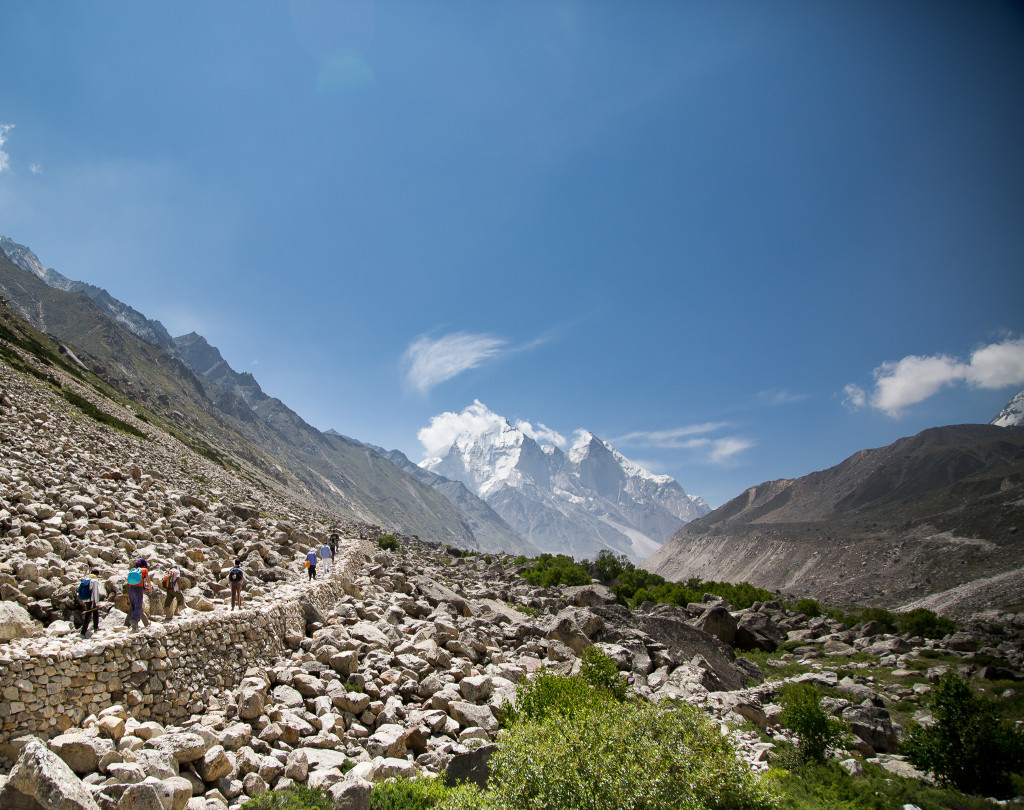
Let go
I’m sure your family and friends have many opinions on India and they can easily hinder your experience. Truth is, once you step out of the comforts of the international airport, the reality will hit your mind, body and soul like a Mike Tyson right hook. But let it! The faster you give in to mother India, the better. She will wrap her arms around you and show you the truth and beauty of her lands and people.
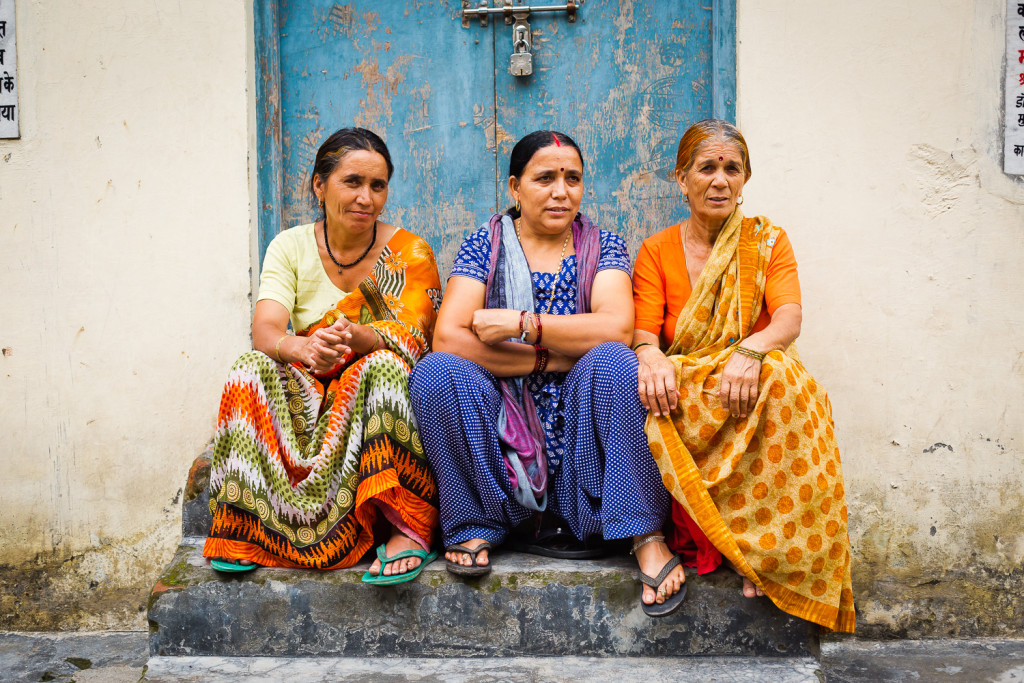
Don’t be afraid to get lost
The streets of this country are beautifully confusing. But generally, from my own experience, nothing is off limits. Walk down the back alleys. You’ll discover some truly unique treasures. Most Indians are pure balls of love and wisdom and are mainly interested in the journey that you’re on.
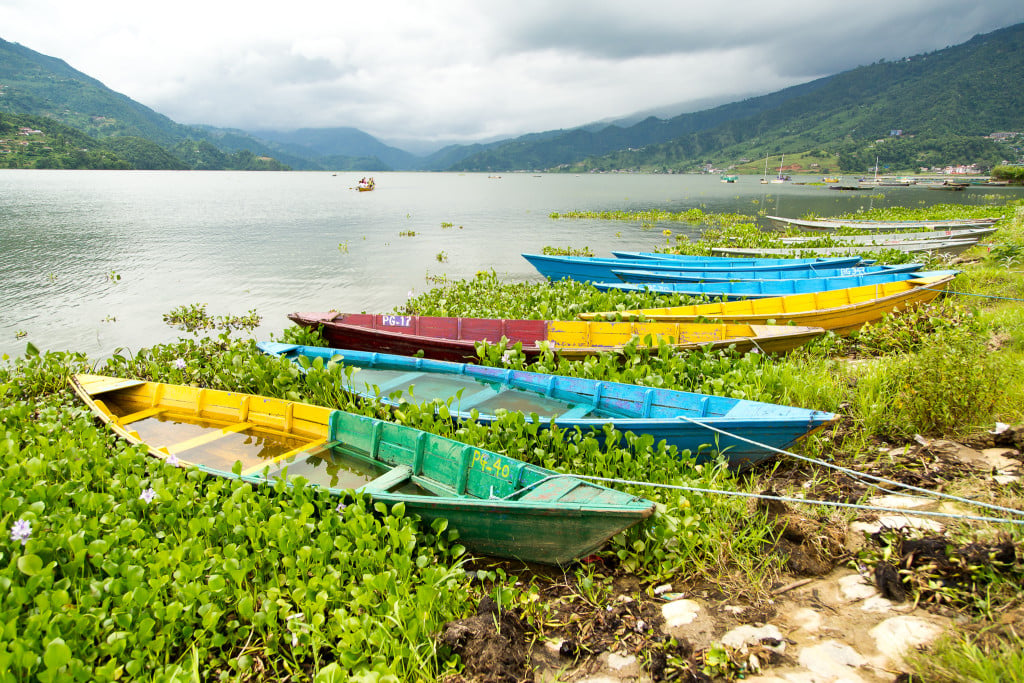
EAT!
It can be a VERY daunting thing to dive into a foreign food, but you’ll NEVER find food like this anywhere else! There are some basic rules to eating in India, but if you follow them you will open up taste buds you never knew you had.
Tipping is not an option
Be prepared to tip everyone. India is a country whose social soul is service. To tell you the truth, I’ve never experienced anything like it before. It comes from a pure place of wanting to help others. With that said, the way the fiscal side of it is set up is that you tip what you want, but it has a direct relationship to what you felt the service was worth. So, if it was a short ride in a took-took or a four hour-long dinner some monetary tip has to be exchanged.
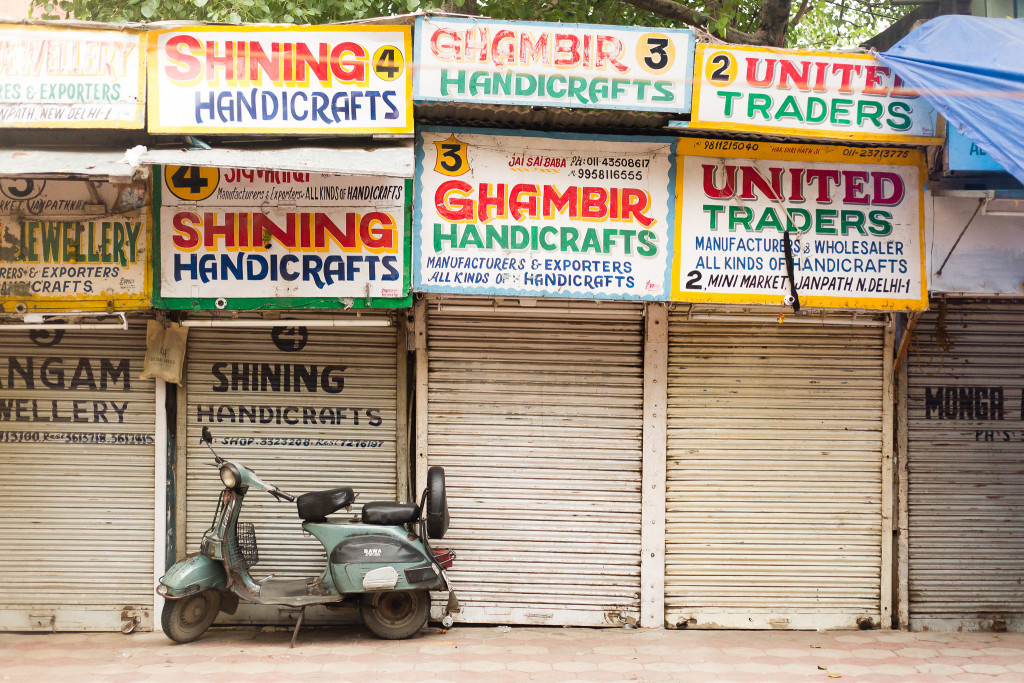
Get a window seat
When traveling by vehicle you’ll have a front row seat to life! Just sit back and take everything in.
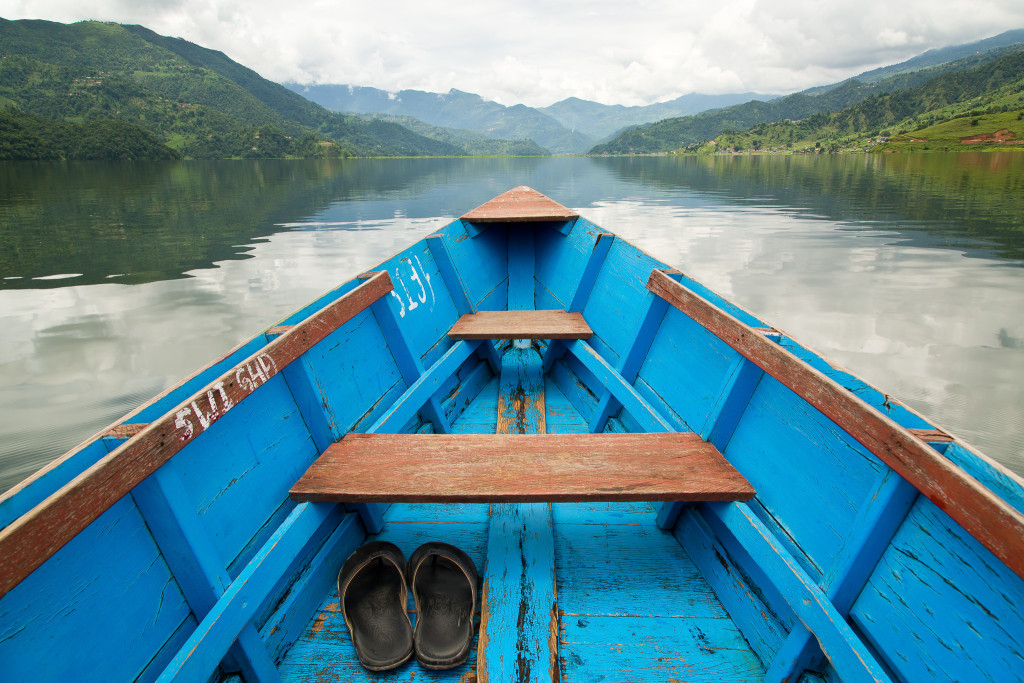
Get a Guide
I normally hate having a local show me around, as I’m one to just do things on my own. But with India it’s very beneficial to have someone on your side. The word “guide” is vague here. This could be a true full-time “guide” that will take care of everything for you (i.e. hotels, transportation food etc), or it could be a personal driver who can be found once you get there. They’ll take you anywhere you want to go, for as long as you want them to for the price of gas, food and tip.
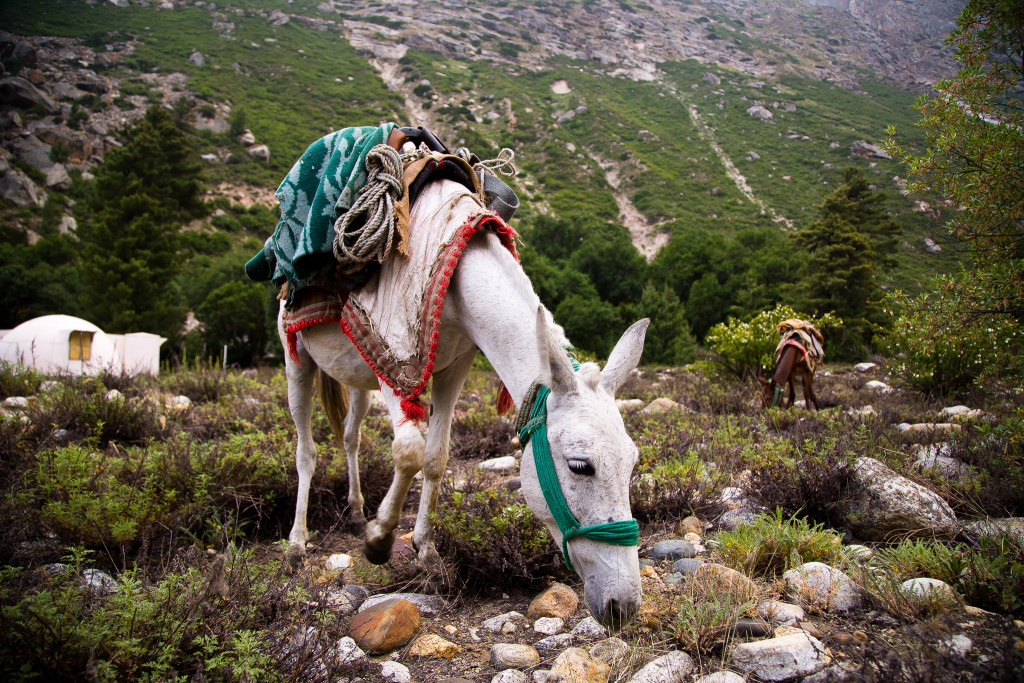
Pack an open mind!
India’s a different world—scratch that—a different universe. Just go with it! If you approach the culture and traditions in a judgmental way, you can offend someone out of ignorance. Trust me, I’ve done it and it isn’t a situation you want to find yourself in. Leave what you know behind and open yourself up to the knowledge, wisdom and love India has to offer. Even if it’s something you don’t agree with, you’re in their home, so be respectful.
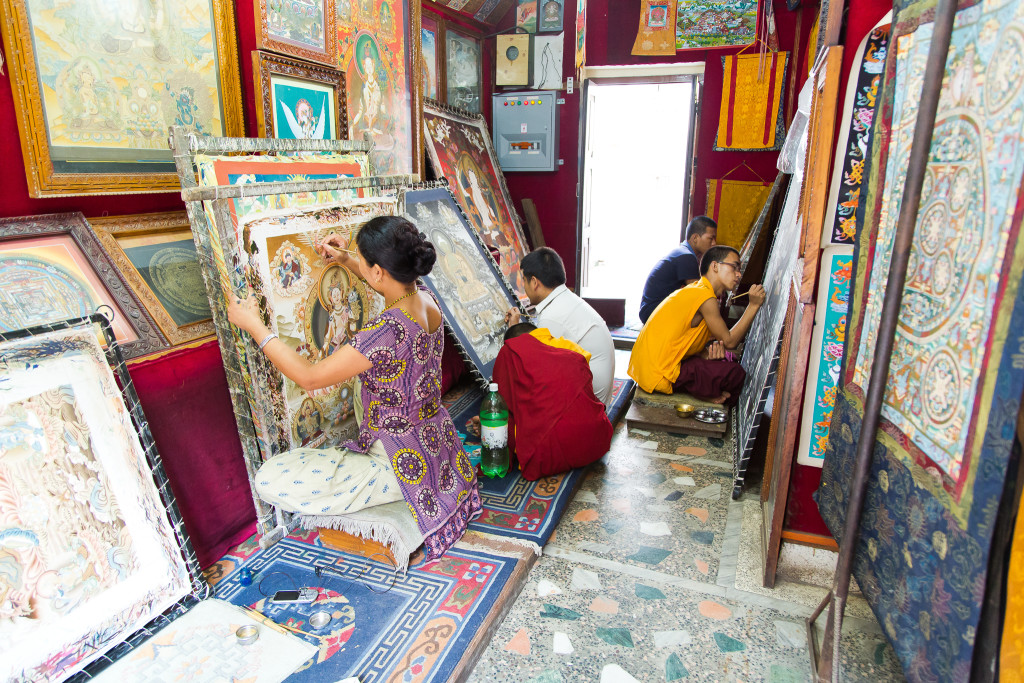
Capturing the Moments
Any photographer should know to be prepared for anything, but unexpected things can happen in India. For starters, there are only a few camera supply or rental stores throughout the country in major cities such as Mumbai, Pune and Delhi, in addition to a number of online rental stores.
Carville suggests a comfortable strap, extra batteries, a video light, lens and sensor cleaning supplies, an external hard drive, a universal plug surge protector (not just power strip as India is infamous for unreliable power) and a camera bag that holds everything you can keep on you at all times. Not to mention, a Polaroid camera will come in handy when shooting the locals, as it will help them open up to you.
If you’re doing a bigger or documentary style production, it’s important to bring any grip you’ll need. “You can find lights, stands and even camera and lens rentals in Dehli and Mumbai, but grips seem to be non-existent in my experience,” Carville explains. As for uploading your photos, most hotels have Internet access, which Carville describes as “wireless dial-up.” You can also find “old-school internet cafes” that are few and far between. The usual cost is about $60 rupees per hour (about $1 USD).

